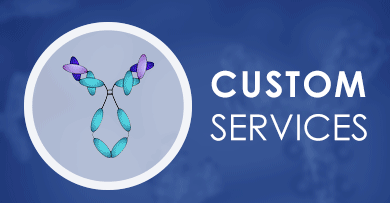+ Filter
 Loading...
Loading...

SARS-CoV-2 RBD
 Loading...
Loading...Anti-SARS-CoV-2 RBD Products
-
- Derivation: Mouse
- Species Reactivity: SARS-CoV-2
- Type: Mouse IgG
- Application: WB, ELISA
-
- Species Reactivity: SARS-CoV-2
- Type: Human IgG
- Application: ELISA, BLI, Inhib, Neut
- Rabbit Anti-SARS-CoV-2 RBD Recombinant Antibody (VS-0723-WK299) (VS-0723-WK299)
-
- Species Reactivity: SARS-CoV-2
- Type: Rabbit IgG
- Application: ELISA, FC
- Rabbit Anti-SARS-CoV-2 RBD Recombinant Antibody (VS-0723-WK310) (VS-0723-WK310)
-
- Species Reactivity: SARS-CoV-2
- Type: Rabbit IgG
- Application: ELISA, FC
-
- Species Reactivity: SARS-CoV-2 (JN.1)
- Type: Human IgG1 kappa
- Application: ELISA, Neut
-
- Species Reactivity: WT, Beta, Delta, Omicron (BA.1, BA.2, BA.4/5, BA.2.76)
- Type: Mouse IgG1 kappa
- Application: ELISA, Neut
- Human Anti-SARS-CoV-2 RBD (clone II62) scFv-Fc Chimera (VS-0125-FY108)
-
- Species Reactivity: SARS-CoV-2 Virus
- Type: Human IgG1, scFv-Fc
- Application: Inhib
- Human Anti-SARS-CoV-2 RBD (clone S15) scFv-Fc Chimera (VS-0325-FY45)
-
- Species Reactivity: Severe Acute Respiratory Syndrome Coronavirus 2 (SARS-CoV-2)
- Type: Human IgG1, scFv-Fc
- Application: Neut
-
- Species Reactivity: SARS-CoV-2
- Target: SARS-CoV-2 RBD
- Type: Symmetric IgG-sdAb
- Application: ELISA, Neut, SPR
View More Products
Can't find the products you're looking for? Try to filter in the left sidebar.Filter By Tag
More Infomation
Our customer service representatives are available 24 hours a day, from Monday to Sunday. Contact Us
For Research Use Only. Not For Clinical Use.
Background
The 140 kDa SARS-CoV-2 S protein is organized into two major subunits (S1 and S2) connected by a furin-cleavage site. The S1 subunit contains the receptor-binding domain (RBD; aa 319-541), a 25 kDa domain that is directly involved in the interaction with the Angiotensin-converting enzyme 2 (ACE2). The RBD contains nine cysteines, including eight that form disulfide-bridges involved in the RBD fold. In addition, the domain displays two N-glycosylation sites (Asn331 and Asn343) known to participate in folding, stability and function. Mutations occurring within this domain are constantly monitored to predict the emergence of novel variants that could be naturally selected and quickly spread, such as the recent isolated alpha (B.1.1.7), beta (B.1.351), gamma (P.1) and delta (B.1.617.2) variants of concern.

